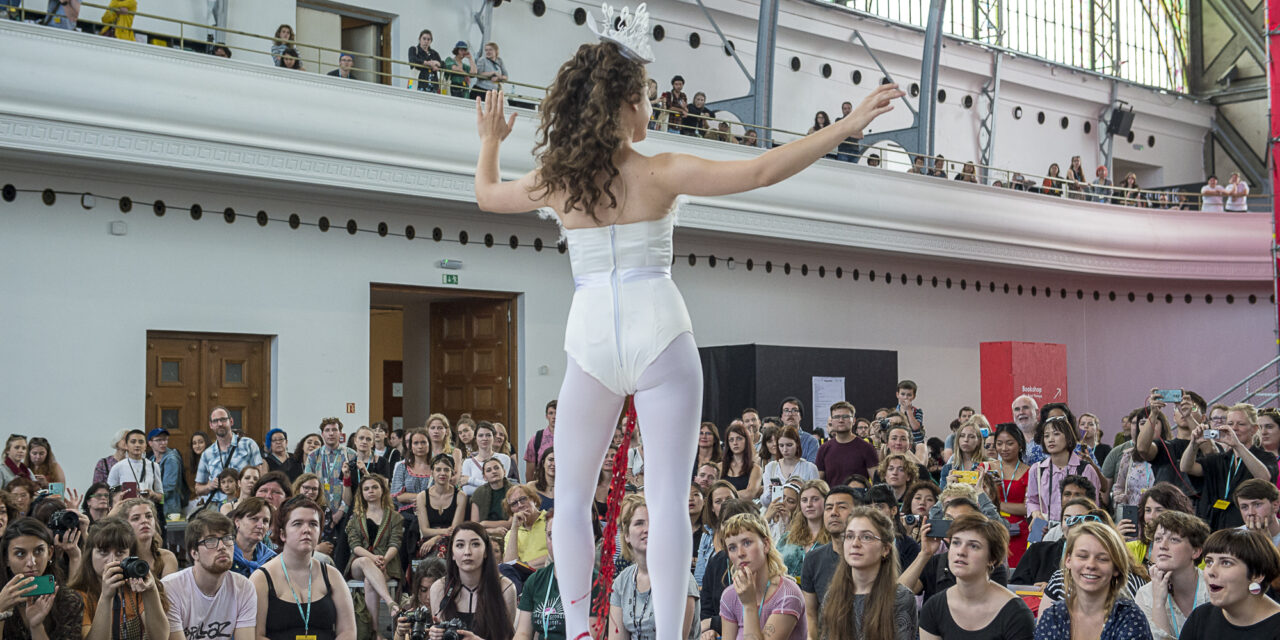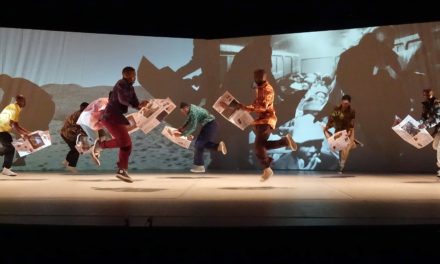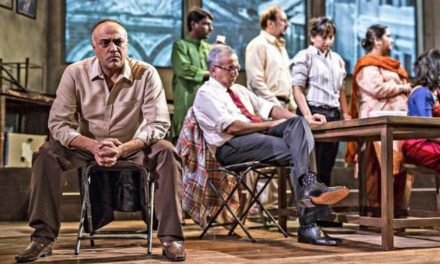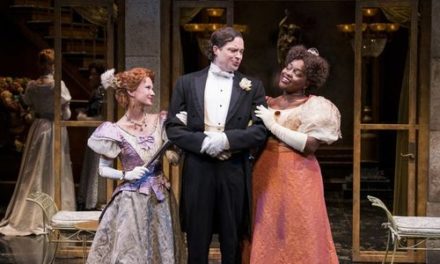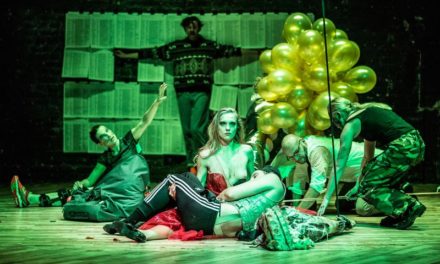This week, the New York Times posted an ad for a new fashion correspondent. The job ad reads, in part, “The Styles desk covers a change in society. This means generational, social and cultural change, as well as coverage of power, wealth and the forces that change the world, with a primary focus on the U.S. but with an eye toward stories with international resonance. Fashion is the ultimate case study for all these forces.”
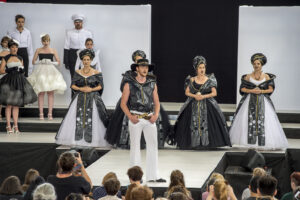
Photo by D. Kumermann
I may not move in haute couture circles, but I do try to keep my eye on “power, wealth and the forces that change the world.” With this newly fortified definition of fashion, I headed to Taboo Collection: A Catwalk Concert created by Fruzsina Nagy and Dóra Halas of Budapest’s Soharóza. I am so glad that I expected so much from a piece in the form of a fashion show. Otherwise, Taboo Collection might have been more than I could handle.
Soharóza is an experimental choir under the direction of Halas. The company is huge, nearly three dozen performers, all with powerful voices that came together sometimes hauntingly, sometimes jauntily. In the nine-movement show, they presented a range of genres, singing a requiem, an adaptation of Walt Whitman’s “I Sing the Body Electric” mashed-up with Allen Ginsberg’s “Howl,” and “Who Loves You” by Frankie Valli. Much of the singing was in Hungarian, giving non-Hungarian speakers nothing to grasp on to except the melodies and tonal repetitions. (Hungarian is not related to any other language, so whereas a speaker of any Romance language can find a foothold in any other Romance language, Hungarian is invitation-only.) To my non-Hungarian ear, some parts sounded doo-wop, others like religious chants in an ancient and sacred tongue.
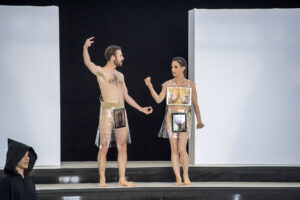
Photo by D. Kumermann
The music was gorgeous, but the costumes were the star. In a show without plot or character, the costumes, in conversation with the music, imparted meaning. As such, ambiguity was built in, although some parts were less ambiguous than others. “Blood” was performed by women in white satin gowns with red lipstick and pumps. One by one, the gowns were pinned up to reveal a bejeweled patch representing menstrual blood. The soloist had a dangling scarlet chain between her legs like a beaded curtain. She alone wore red platforms and she danced like Salome, fully empowered in her womanhood. In “Symptoms,” elaborate costumes represented physical and mental ailments. A woman in a crimson gown had a silver halo and a netted river pouring out of her mouth – a toilet seat and vomit; she suffered from bulimia. One performer wore a see-through bodysuit with bulbous black protrusions which trapped one of the performer’s arms inside, another had on a long gray gown with lace sleeves and a headpiece that completely covered her face. Smallpox and depression, respectively. To represent such illnesses visually though not literally, and in many cases beautifully, is an incredible achievement. Infirmity but make it fashion.
In many pieces, darkness existed alongside humor. “The Body,” the Whitman/Ginsberg collaboration, featured choral singers in black robes and soloists essentially nude, wearing clear plastic sheaths onto which were attached IPads showing the naughty bits. The singers swiped to move through images of breasts and penises. Whitman and Ginsberg would have loved it. In “Wicked Wicked Wicked,” male performers wore oversized paper suits with full-coverage masks that like they had been designed by little children. Scribbled lines, stick-figure hands, reified. Their singing and movements were child-like too. Like a toy chest come to life, it was amusing until it was unsettling. Freud called this effect “unheimlich” – “uncanny.”
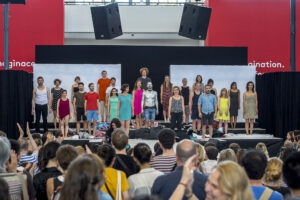
Photo by D. Kumermann
My favorite, and this is because I’m a sentimental sap, was “Hook-Ups.” Performers wearing simple but futuristic black and white ensembles with wild poofy headpieces – some plastic, some paper, some loofah-material – experimented with each other until finding the right match. No two costumes were the same, but when they paired up, it was with someone wearing a complementary look, with hair of the same material. It was silly and cute and it made me cry just the teeniest bit.
By the end of the show, when all the performers came back to the stage wearing costumes representing as many of the acts as they possibly could, and then stripped out of them, the crowd went nuts. (One performer who had on silver body paint and a whole BDSM get-up was left standing in just jean cut-offs and a dog collar, looking very much like Tobias Fünke.) For all the work that goes into it, most fashion shows are very short, lasting only twenty minutes at the most. We spent an hour with Soharóza, getting to know the Taboo Collection and all it stands for – honesty, acceptance, inclusivity, sex positivity, and joy. The ultimate case study for all these forces.
This post was written by the author in their personal capacity.The opinions expressed in this article are the author’s own and do not reflect the view of The Theatre Times, their staff or collaborators.
This post was written by Abigail Weil.
The views expressed here belong to the author and do not necessarily reflect our views and opinions.

